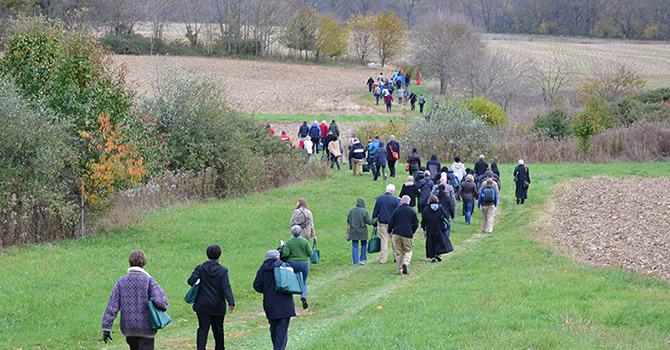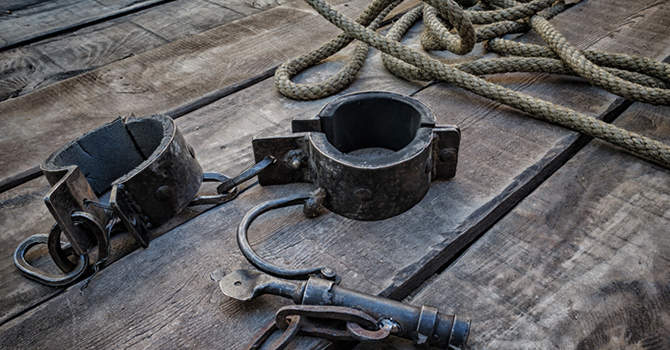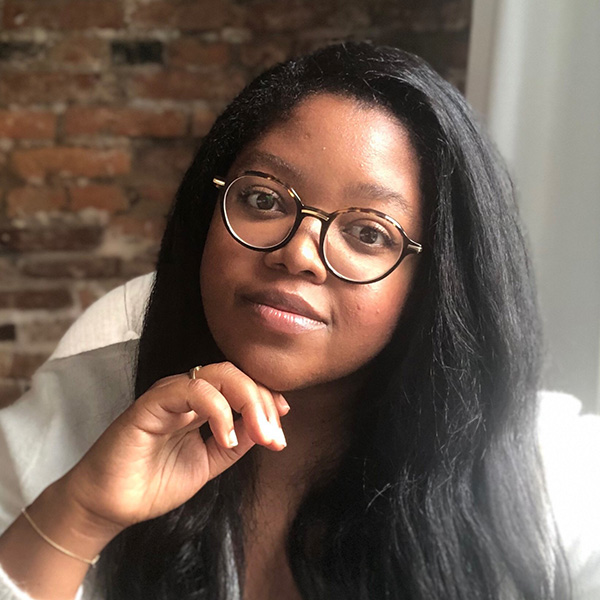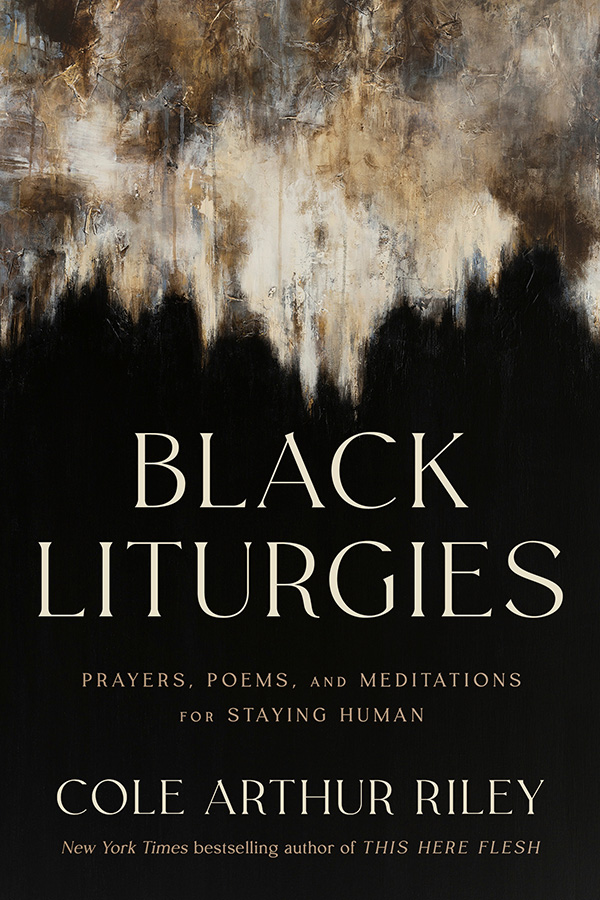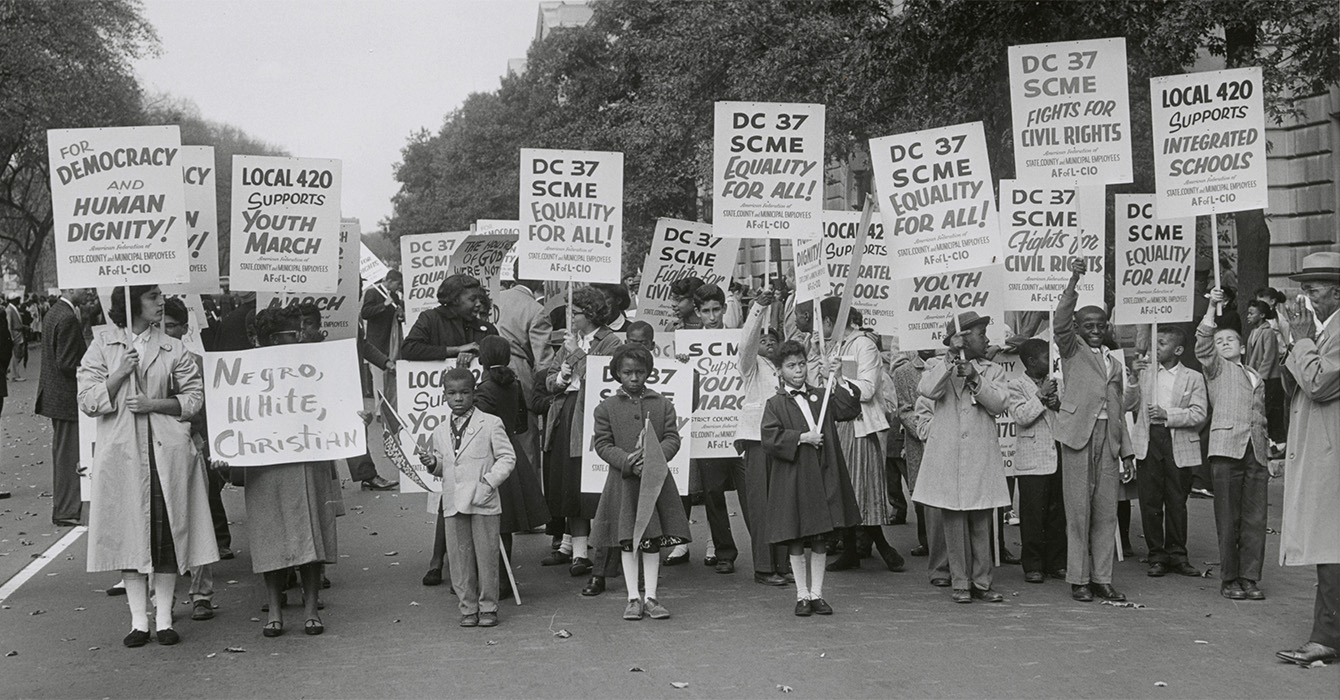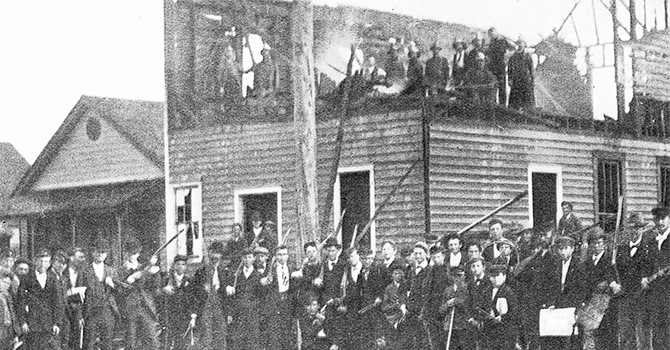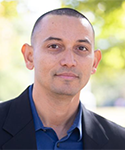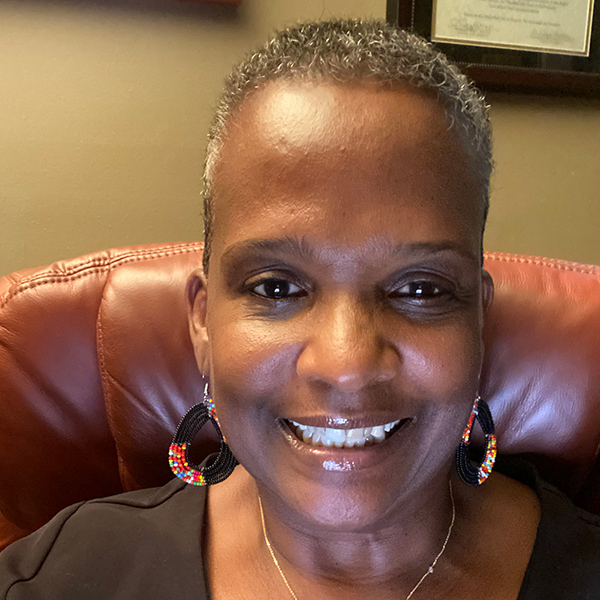One memorable day two summers ago, the Rev. Natalie Conway was sitting in Baltimore’s Memorial Episcopal Church when her brother called. He’d made a trip to the Hampton National Historic Site, once one of the nation’s largest plantations. Chasing a tip from a cousin, he’d found records that mentioned probable enslaved ancestors who shared a family surname: Cromwell.
The Baltimore-raised siblings had been scouring online genealogy sites and searching for their forefathers and foremothers. That’s no small task, since paper documents don’t always survive time, floods or household purges. Moreover, bondspeople are notoriously hard to trace, because — deprived of literacy, last names and personhood — they left few clues.
Conway, a deacon at the church, recalls her brother asking whether she knew that Charles Ridgely Howard may have owned their ancestors.

“I was like, ‘Where have I seen that name? I’ve seen that name,’” she said. “And sure enough, it was on one of the plaques at the back of the church.”
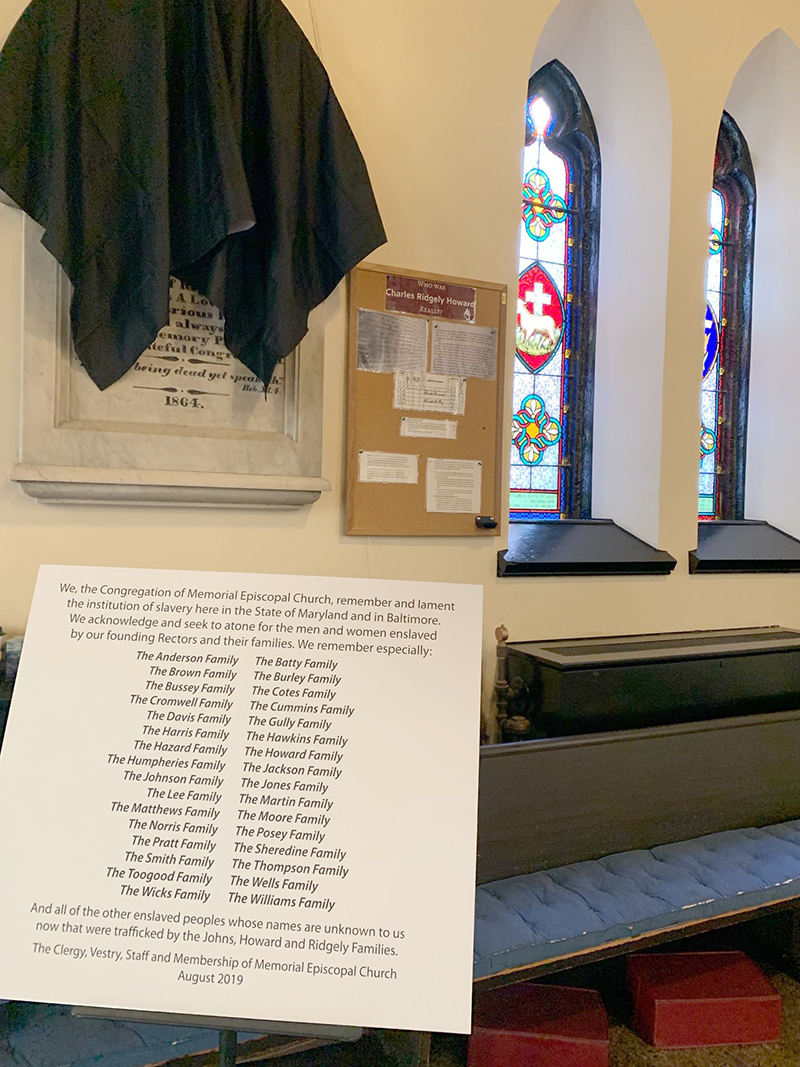
Howard, it turned out, was the parish’s first rector. Memorial Episcopal Church was established in 1860, just before the Civil War erupted, when Southern sympathizers broke from their abolitionist mother church.
Memorial’s founding fathers were slaveholders and, after the war, proponents of the Lost Cause, a narrative that painted the seditious South as the aggrieved party.
A second Memorial member also had a connection to Hampton. Restaurateur Steve Howard, 54, is an indirect descendant of Charles Ridgely Howard.
“The fact that [his ancestors] were enslavers wasn’t hidden. It just wasn’t dwelled upon in our family history,” he said. “It was, ‘Here were these people; they had a farm, they were involved in politics and building the city and all that — and they had slaves, too.’”
“Let’s move on” was the general sentiment, he said.
The convergence of Conway’s and Howard’s stories — one arising from people enslaved at Hampton, the other from the planter class enriched by stolen human labor — became the narrative linchpin for Memorial Church’s reparations work.
Today, the congregation in Baltimore’s Bolton Hill neighborhood is at the vanguard of religious communities’ racial reconciliation efforts. It has created a reparations program that includes the establishment of a $500,000 fund to support Black-led nonprofits such as Black Women Build; deepened ties with a nearby African-American Episcopal congregation; set up a standing committee to consider how the church can meaningfully affect racial justice; and committed to a continuing effort to excavate the church’s history, warts and all.

As an increasing number of cities such as Asheville, North Carolina, and Evanston, Illinois, are in various stages of municipal reparations programs, congregations and denominations are having similar discussions. They are looking toward some form of atonement and compensation to address historical injustice done to a particular group — wrongs such as enslavement, the violations of Jim Crow, redlining that confined a racial group to segregated, substandard housing, the internment of Japanese Americans during World War II.
More than compensation
Though reparations are not merely about compensation, they can take the form of cash payments, scholarships, donations of real estate, or investments in social programs or infrastructure in communities demonstrably affected by racism.
The recent centennial of the 1921 Tulsa Race Massacre, in which a white mob burned the city’s prosperous “Black Wall Street” district, prompted renewed calls for reparations for families who lost property, loved ones and livelihoods. Neither insurance nor local government ever paid for property lost in the attack. In June, one Black church in Oklahoma gave $200,000 checks — roughly the median cost of a home in Tulsa — to three known survivors.
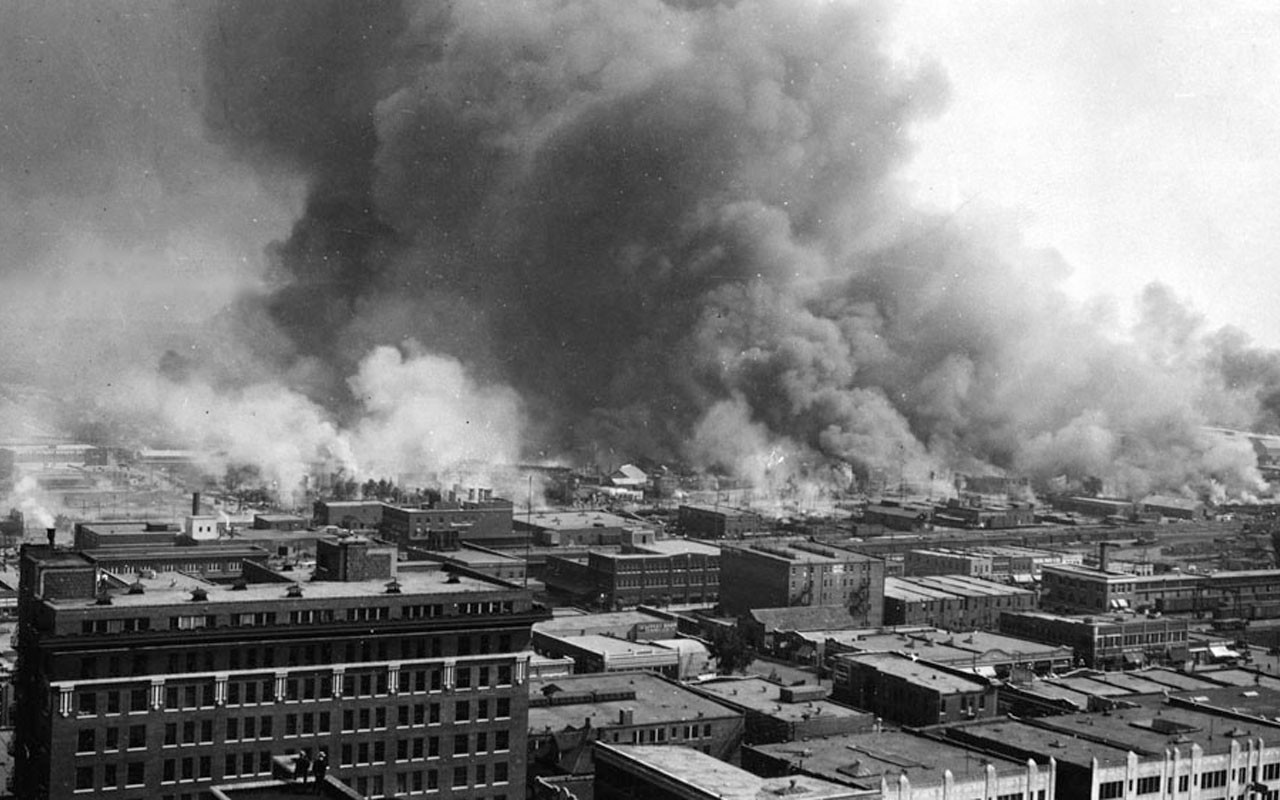
Elsewhere, the Virginia Theological Seminary in Alexandria has begun distributing $2,100 annual payments to descendants of the enslaved or Black workers who were unpaid or underpaid for labor on its grounds during segregation.
The Episcopal Diocese of Maryland, which includes Memorial, agreed to study reparations in 2019. By September of the next year, more than 80% of its delegates voted to establish a $1 million seed fund to be disbursed to programs in Black communities in Baltimore and the rest of the state.
In its recent history, Memorial has a reputation for progressivism, as the first Maryland church to bless a same-sex union (in 1992) and as a leader in the support of LGBTQ clergy and ministry to those living with HIV or AIDS.
Knowing and understanding history
Even so, committing to reparations required learning about where the church had stumbled and broadening his own view of what needs to be repaired, said the Rev. Grey Maggiano, the church’s rector.
In May 1956 — almost two years to the day after the U.S. Supreme Court declared public-school segregation unconstitutional — Memorial parishioners refused a substantial grant for church expansion, records show, because of the funding’s conditions.
The congregation would have to admit Black members. The vestry voted no and showed the rector the door.
Maggiano had studied public policy before coming to Memorial in 2016, a year after Freddie Gray’s death in police custody sparked the Baltimore uprising. The church is in a largely Black West Baltimore neighborhood — near Eutaw Place, where turn-of-the-century mansions are within walking distance of open-air drug markets and boarded-up buildings that are proof of urban divestment.
The new rector asked Black neighbors what their experience of the church had been. The answer: “Your part of the neighborhood isn’t safe for us to walk through.”
A self-described data nerd, Maggiano requested 911 call records for the area. For 2019 alone, he found 280 calls that reported “suspicious persons” in the vicinity. Combine that with a mostly white congregation that didn’t desegregate until 1969, and the wide gulf between the church and its neighbors was no surprise.
“Black communities remember, and white communities have forgotten these histories. Or we refuse to listen,” Maggiano said.
Maggiano and his parishioners have navigated blind spots and tender points. When Conway preached about her brother’s discovery, the plaques were still in place, though covered with black cloth.
“I could see it flapping in the wind. It made me angry. I told the congregation, ‘I can see the ghosts.’” She searched for a way to channel her pain and righteous anger.
In what ways has white people’s amnesia or avoidance of the history of racialized violence prevented repair and healing?
Just days later, white and Black congregants from Memorial and its sister church, the historically Black St. Katherine of Alexandria, visited Hampton plantation, where Conway and Howard offered a liturgy-libation to honor the enslaved.
Still, some Black members didn’t want to engage in race discussions; such talks had gone badly before. They “liked this church and wanted to continue to like white members,” Maggiano said. And Howard suspected, even when people didn’t say it, that some white members felt unfairly implicated.
“As an individual, I can say, ‘I didn’t enslave anybody.’ Somebody else can say, ‘My family didn’t enslave anybody,’” Howard said.
“But then you see our entire society — the White House and the Capitol building were built by enslaved people; the economy of New York had developed on the backbone of slaves; the economy of Rhode Island and New England profited from the cotton that was picked by enslaved people. Even if you pride yourself on being a Yankee abolitionist, your town was still reliant on the labor of enslaved people [somewhere in America].”
Hard though those lessons were, Memorial had a few things in its favor — a tangible and explicable connection to slavery, a motivated rector, a sympathetic diocese — which made the conversation less fraught, though not easy.
Justice, not charity
White people and congregations must undertake a difficult and reflective journey if they are interested in reparations as an act of justice — not charity — and healing, said the Rev. Carl W. Kenney II. He founded the nondenominational inclusive church Liberation Station in Durham, North Carolina. When he started the faith community in 2019, the first program was a panel conversation about reparations.
“We have to talk about white congregations taking ownership, that this is your issue. You need to talk about your resources, how your church, local congregation and families have become institutions heavily reinforced by advantage and generational wealth,” Kenney said. “If you’re going to have a conversation about racial reconciliation, you can’t do that without placing reparations at the forefront of that conversation.”
One barrier to reparations in the United States is Americans’ cultural value of individual responsibility. What Christian theological teachings point beyond individualism and toward communal responsibility?
That’s the philosophy behind efforts by the Synod of Lakes and Prairies of the Presbyterian Church USA. While Memorial is taking an approach that centers its congregation and immediate Baltimore community, the synod is developing a strategy that could theoretically be embraced by its almost 800 churches within a broad swath of the Midwest.
Minneapolis' Jim Koon, who serves as the synod's treasurer, explained what a small group of individuals within the denomination have in mind.
"We look at the [idea of reparations] as a personal spiritual issue, as a community issue, and a complicity issue. First, we're working on a curriculum that educates churches that this wealth gap will never do anything but grow unless there's a response to it. So our objective is to engage folks about what they can do, [including] surrendering what they feel their own ill-gotten gains are, and get those funds in the right hands."
The goal: getting individuals, congregations and affiliated institutions to donate 15% of their assets to trusts that will disburse monies to communities without the intervention of the church itself.
Securing and allocating funds is an assignment with many moving pieces: internal culture shift; handling difficult conversations and dissent; and mobilizing existing mechanisms or building infrastructure to support this unprecedented initiative.
How might a congregation integrate reparations and sacred memory work into its Christian formation practices and teachings?
Discussion moves forward
Depending on perspective, the process is moving fast or slow. Reparations has been on the PCUSA table before. In 2004, it released a report on how to compensate and reconcile with Black Americans, Native people, and others who experienced historical and ongoing unjust treatment.
That document was largely in the vein of many reparations statements of the time: It called for study, deployment of church resources for economic development initiatives, and empowered PCUSA advocacy of the reparations bill, now known as HR 40, that the late Rep. John Conyers (D-Michigan) first introduced in Congress in 1989.
The PCUSA reparations discussion gained steam in recent years. Koon began to have conversations with church colleagues, and those conversations eventually led to the Rev. Dr. J. Herbert Nelson, the first Black American to lead the denomination in its 300-year history. Nelson challenged Koon and likeminded thinkers to craft a concrete and innovative “restorative action” plan.
The resulting actions included a catechism about what it is — an effort aimed at racial equity and repair — and what it isn't — charity or something pushed upon Black or brown communities without their consultation or leadership.
The Rev. Sarah Moore-Nokes, also of the Synod of Lakes and Prairies, added that the process is both spiritual and bureaucratic. "We are working with attorneys to have legal language solidified to send to the IRS later this summer," because moving money requires a tangle of red tape.
"The plan is to make the first distributions out of the trusts in the first quarter of next year, which is ambitious. But we are committed to decolonizing wealth....We will hand off the decision-making process. Whatever happens to the money after that is really not ours. We don't get to control that. That's what I think is different about [this approach to] restorative actions from any other conversation that I've been involved. Because white people like to control the process."
The financial component of reparations could come from many quarters: individuals donating shares of their retirement plans, city-based funds or churches’ domestic mission programs. But many clergy say first must come acknowledgment that the church created racial ideology that justified slavery and benefited from it.
How can the church participate in reparations as an embodiment of Jesus’ teachings of repentance and repair?
In 2001, Iva E. Carruthers — now the general secretary of the Samuel DeWitt Proctor Conference, a convening of Black Christians working for social justice — wrote “The Church and Reparations,” a landmark publication that was distributed by the United Church of Christ in four languages at the United Nations World Conference Against Racism in Durban, South Africa.
That year, the global body was considering language endorsing compensation for countries affected by slavery and colonialism. At the last minute, the United States boycotted, reportedly in part to avoid criticism of its racial record.
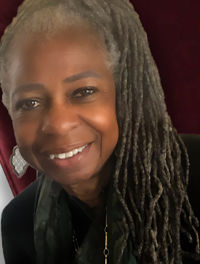
The story of Callie House
Carruthers pointed out that the demand for compensation for slavery transcends borders and time: “Wherever we are in this movement, we are entering a continuum of resistance where Black people are calling for reparations. In the United States, for example, we had Callie House.”
House, a washerwoman born enslaved in Tennessee, co-founded the National Ex-Slave Mutual Relief, Bounty and Pension Association in the late 1890s. Rooted in the belief that freedpeople were owed something for their forced servitude, the organization even suggested a pay scale: ex-slaves 70 or older would get a one-time payment of $500 and $15 monthly for the rest of their lives.
Those payments were akin to veterans pensions — and reasonable, considering that, as historian Tera Hunter has written, some slave owners were paid for losing their slaves after the war. House’s partner in initial organizing was minister Isaiah Dickerson, and their rousing lectures found eager audiences in Black churches far and wide.
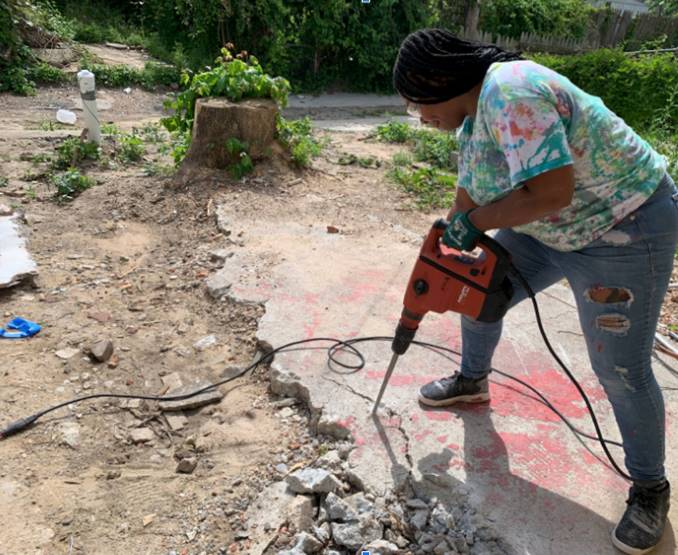
In more modern times, James Forman disrupted a 1969 service at New York’s Riverside Church with a list of demands known as the “Black Manifesto.” Forman, former head of the Student Nonviolent Coordinating Committee, which galvanized sit-ins and youth activism across the South, delivered the manifesto in a fiery reading that opened with a call for white churches and synagogues to pay half a billion dollars to Black Americans.
As the Riverside organist tried to drown him out, Forman held the floor and read on, noting that the $500 million “is a low estimate,” equaling only $15 per individual in the Black population at the time.
He continued: “We know that the churches and synagogues have a tremendous wealth and its membership, white America, has profited and still exploits [B]lack people. We are also not unaware that the exploitation of colored peoples around the world is aided and abetted by the white Christian churches and synagogues.”
Nearly half of the $500 million was to fund a land bank for the establishment of cooperative farms. Other monies would underwrite new publishing companies, television networks, a research think tank, entities to protect Black workers, and business enterprises between the United States and Africa.
From study to remedy
Some 50 years later, Carruthers still advocates a multipronged approach — as long as it progresses to action sooner rather than later.
“We’ve had study,” she said, referring to decades of scholarship about the harmful impact of slavery. “We now need remedy.”
And that is itself a multi-tiered process. That includes a political component. Various church denominations and Washington, D.C.-based leaders have been holding weekly meetings with members of Congress pushing HR 40, which would create a federal commission to study reparations. In April, the bill made it to the markup stage before the powerful House Judiciary Committee, a stage to which it had never advanced and a necessary step for the bill to be presented to the full House of Representatives for debate and a possible vote.
The Rev. Sekinah Hamlin of the United Church of Christ has convened this varied group of clergy and believes the bill will move before summer’s end.
“We are very close. Numerous faith traditions have been really on the ground and having their members send letters, including the National Council of Churches, the Evangelical Lutheran Church in America, the Catholic lobby and more,” Hamlin said.
We've had study. Now we need remedy.
Dr. Iva E. Carruthers
“They’ve made sure that the voices of what I call Sally and Joe Pew, the people in the pews are being raised to their member of Congress,” she said. “The legislators will know that, as people of faith, we take our role as the repairers of the breach seriously.”
For Carruthers, reparations is a “sacred memory ministry. We must lift up the commandment that thou shall not forget where God has met you in your deepest moments, and answer the call in Deuteronomy to teach the story to your children and your children’s children.”
So it must start with acknowledgment but move into concrete strategies to improve people’s lives. In a 2019 article for the American Civil Liberties Union, Carruthers enumerated 10 points for reparations. Among them are a formal apology, investments in health and well-being, affordable housing, and preservation of Black cultural monuments.
That’s a tall order, but it’s one that Howard, the descendant of slave owners, is eager to take on now as the world is cautiously reopening.
“It’s about building relationships; it’s not just about money. I mean, money helps. Without money, there’s a credibility question,” he said.
“But if we can have a strong relationship with St. Katherine’s and St. Katherine’s can be a viable presence in West Baltimore, and if organizations like Black Women Build...can thrive because of something that Memorial Episcopal does, that’s what I want to be a part of. I don’t want it just to happen. I want to be a part of it.”
What role can faith communities play in calling the larger community to the work of reparative justice for Black and Indigenous people?
Questions to consider
- In what ways has white people’s amnesia or avoidance of the history of racialized violence prevented repair and healing?
- One barrier to reparations in the United States is Americans’ cultural value of individual responsibility. What Christian theological teachings point beyond individualism and toward communal responsibility?
- How might a congregation integrate reparations and sacred memory work into its Christian formation practices and teachings?
- How can the church participate in reparations as an embodiment of Jesus’ teachings of repentance and repair?
- What role can faith communities play in calling the larger community to the work of reparative justice for Black and Indigenous people?



